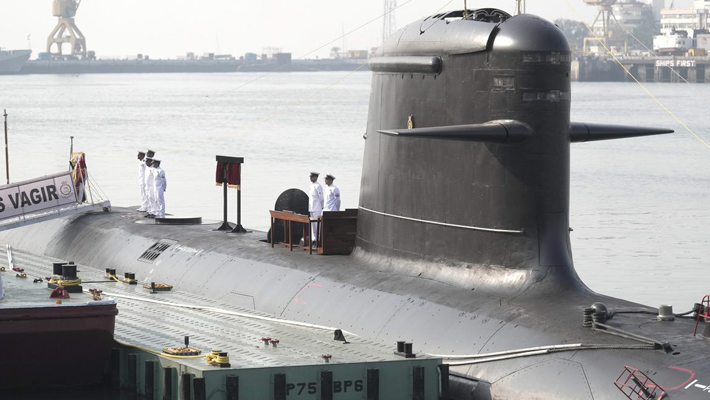
The ocean is a harsh and merciless environment. You don't tamper with the sea. It's like a beast waiting to devour you if you make one mistake. This is not a ride to a Disneyland attraction. The recent “Titan” submersible wreckage was discovered by the US Navy; it had gone radio silent one hour forty-five minutes into its expedition. The search was carried out extensively and unfortunately, it was too late. It is incidents like this that emphasise the role of underwater search and navigation technologies. Here are some technologies which are currently in use.
Towed array sonar is one of the most modern systems for locating lost submarines. This device employs a long, flexible wire with numerous hydrophones that can detect and analyze sound waves from deep under the water. Other technology, such as autonomous underwater vehicles and high-frequency sonar, can also be used to find lost submarines. However, there are certain disadvantages to employing towed array sonar. Heavy waves, for example, might disturb the system, making it less efficient under harsh weather situations. Furthermore, the technology is sophisticated and costly, making it inaccessible to smaller military or research organizations. Another issue is that the technology might be discovered by an opponent since the towed array's sonar signature is easily recognized. Harvey Hayes, a US Navy scientist, invented towed array sonar during World War.
Sonar Systems
Sonar (Sound Navigation and Ranging) systems play a crucial role in submarine search and rescue operations. These systems emit sound waves that travel through water and bounce back when they encounter an object, allowing operators to determine the object's location and characteristics. In the case of locating lost submarines, both active and passive sonar systems are utilized. Active sonar sends out pulses of sound waves and listens for their reflections, while passive sonar listens for sounds emitted by the submarine, such as propeller noise or crew distress signals.
Autonomous Underwater Vehicles (AUVs): AUVs have become indispensable tools in underwater search and rescue missions. These unmanned submersibles are equipped with sophisticated sensors, cameras, and navigational systems, enabling them to explore vast underwater areas with remarkable accuracy and endurance. AUVs can be programmed to follow predefined search patterns, conduct detailed mapping of the seafloor, and capture high-resolution images or video footage. They serve as invaluable assets, providing real-time data and reducing the risks associated with human divers operating at extreme depths.
Remotely Operated Vehicles (ROVs)
ROVs are robotic devices used for underwater exploration, surveillance, and maintenance operations. They are connected to a control system and operated from a remote location, allowing for operations in hazardous environments. ROVs are used in numerous industries, including the oil and gas industry, oceanography, and defense. ROVs are advantageous because they can reach depths that would be impossible for humans to reach and can be operated for long periods with minimal human intervention. Furthermore, they are capable of performing complex tasks, such as inspecting pipelines and retrieving objects from the seafloor. There are some disadvantages of ROVs as well. They can be expensive to operate and maintain. They also can be difficult to control, especially in deep waters where the currents are strong. Additionally, ROVs can be damaged by collisions with objects in the water or by the very environment they are designed to operate in. For instance, an ROV may be damaged by high pressure or extreme temperatures when it dives too deep depths, which can result in the loss of the vehicle and any valuable data it was collecting.
ROVs are another critical technology used in the search for lost submarines. Unlike AUVs, ROVs are controlled by human operators on the surface using a tethered connection. These robotic vehicles are equipped with powerful manipulator arms, high-definition cameras, and sonar systems. ROVs can reach greater depths than AUVs and are particularly useful in scenarios that require intricate manoeuvrings, such as the recovery of debris or bodies. They provide crucial visual confirmation and can gather evidence necessary for subsequent investigations.
Side-Scan Sonar
Side-Scan a sort of sonar technology used to map the seafloor is sonar. It detects things on the ocean floor using sound waves and creates a precise map of the region. It may also be used to find sunken ships and other seabed items. This device works by bouncing sound waves off seabed objects and monitoring how long it takes the sound waves to return. The information gathered is then utilized to create a detailed picture of the seabed that may be used to find items and features. This technique, however, has limits. For example, it is constrained by the slower speed of sound in water than in air. This implies that this technique cannot be used to identify items that are very deep in the water. Furthermore, this method is hampered by the presence of noise in the water, which can interfere with the sound waves and make precise data difficult to gather. Noise from passing ships, for example, might obscure the sound waves emitted by the sonar, making it harder to identify items in the ocean.
Side-scan sonar is a specialized technology employed to create detailed images of the seafloor and identify submerged objects. It uses sonar beams directed sideways from the search vessel, allowing for efficient coverage of large areas. Side-scan sonar systems produce highly detailed acoustic images that help locate wreckage, debris, or even the entire outline of a lost submarine. These images aid search teams in narrowing down search areas, improving the overall efficiency of the operation.
Underwater Acoustic Beacons
Modern submarines are equipped with emergency locator beacons known as pingers or "pingers." These battery-powered devices emit acoustic signals at regular intervals, allowing search and rescue teams to locate the submarine more easily. When a submarine is lost, the pinger's frequency and unique acoustic signature provide crucial information for tracking and identification. Specialized equipment, such as towed hydrophone arrays or autonomous acoustic receivers, is used to detect and triangulate the signals emitted by these beacons.
Hence, the advent of technology has transformed the method through which lost submarines are identified and retrieved. Sonar systems, autonomous underwater vehicles (AUVs), remotely operated vehicles (ROVs), side-scan sonar, and underwater acoustic beacons are just a few of the modern technology that has vastly enhanced search and rescue operations in our waters. These cutting-edge capabilities not only boost the likelihood of successfully locating missing submarines, but they also give essential data for post-incident investigation and improving maritime safety.







